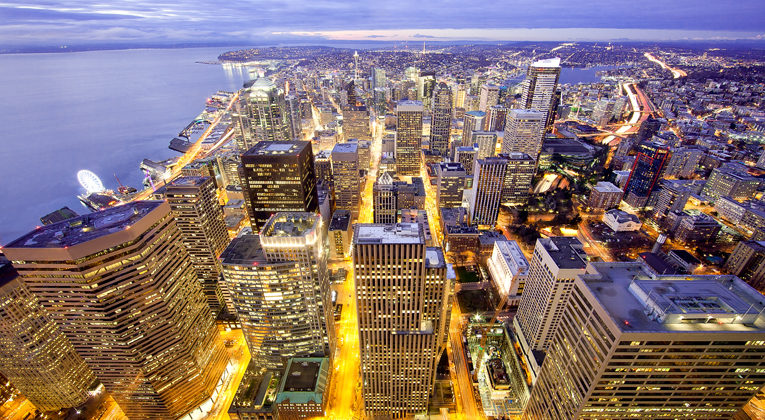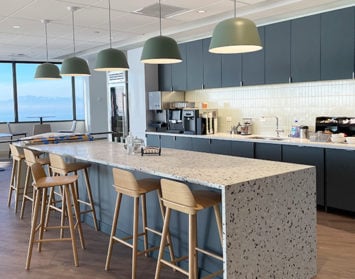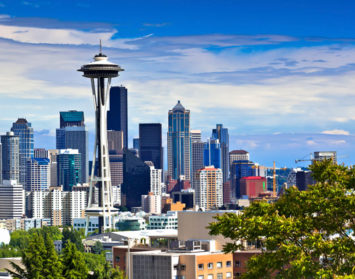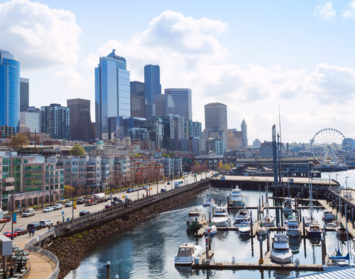By Owen Rice
Seattle has long been a famous city in America, gaining national attention in 1897 when our waterfront became the launching pad for the Klondike Gold Rush and those heading north to seek their fortunes. That’s when Seattle resident C.C. Filson made a name for his clothing company by outfitting those setting off to stake their claims in the north. Not long after in 1916, William Boeing started The Boeing Company, which now lays claim to being the world’s largest aerospace company. Of course, we can’t forget 1986, when Microsoft filed for their initial public offering and started their Redmond, WA, campus.
There are dozens of success stories like those from the 20th century today but never before has Seattle experienced growth like this past decade. Due to Amazon.com and a growing workforce that is partially fueled by companies headquartered outside Washington State, Seattle has become one of the fastest growing cities in the United States. Seattle’s year over year population growth is nearly 2%, adding approximately 15,000 new residents per year.
On the eve of completing our second decade of the 21st century, Seattle is graduating from a Gateway City and becoming a World-Class City. While the definition of a World-Class City is somewhat subjective, most would agree that World-Class Cities check all the proverbial boxes such as having great universities, museums, professional sports, tourist appeal, cultural flair, diversity, Fortune 500 companies and a rich history among others. However, there’s one thing that all World-Class Cities have which Seattle lacks: great transportation. Seattle’s transportation deficiencies are something our residents are acutely aware of and our civic leaders are trying desperately to solve, but it comes at a price.
On January 7th, Mike Lindblom of the Seattle Times published an article titled “If you think Seattle traffic is bad now, just wait until these projects start”. The article showcases 19 transportation projects that will have a significant impact on our region’s transportation congestion through 2021. Already in 2018, it takes the average commuter 35 minutes to travel from West Seattle into downtown, just 6 miles. Far worse off are those traveling south from Everett where their average commute exceeds an hour and a half. While some may see it as unfortunate that a city that places so much emphasis on progress and innovation is faced with such an issue, once complete, these various projects will result in more public transportation options for those living outside of the city and in turn reduce the number of those commuting in single-occupant vehicles. The long-term effects will not only make Seattle an easier place to live, but more importantly they will make further development possible to support our local economy. As a Seattle resident who has a beguiling appreciation for this city, I’m buckling my seatbelt for what may be a wild ride the next four years.
Might there be more room to grow beyond where we are today? The answer is most certainly yes, which is why solving our transportation issues have never been more important. Seattle remains one of the tightest office markets in the United States but compared to other cities, our average cost for commercial office space is still discounted in comparison to markets like New York and San Francisco. So long as our cost of real estate and labor remains lower than the aforementioned cities and those alike, Seattle will continue to attract companies looking to expand or establish operations in our region.
While the Seattle skyline is dotted by nearly 60 construction cranes, those which are constructing new office towers are mostly pre-leased. The overall vacancy rate for Seattle is now just 7.7% with the 12-month projected rent growth to be 6.3%. With more than 2 million square feet of office space under construction and expected to deliver by 2020, only 4% of the total space is available. While nobody can speak with certainty about the 2025 fundamentals of our commercial real estate market, a correction, albeit possibly small, is inevitable at some point. As my teammate Gavin Curtis pointed out in an article he published in November, Seattle’s growth over the last seven years underscores the need to be cautious when developing one’s occupancy strategy for the next decade. Navigating the waters of commercial real estate can be extremely complex but that’s why our company was founded, to provide our clients with the expert, conflict-free counsel they deserve.
Owen Rice is an executive vice president at Hughes Marino, a global corporate real estate advisory firm that exclusively represents tenants and buyers. Contact Owen at 1-844-662-6635 or owen@hughesmarino.com to learn more.











